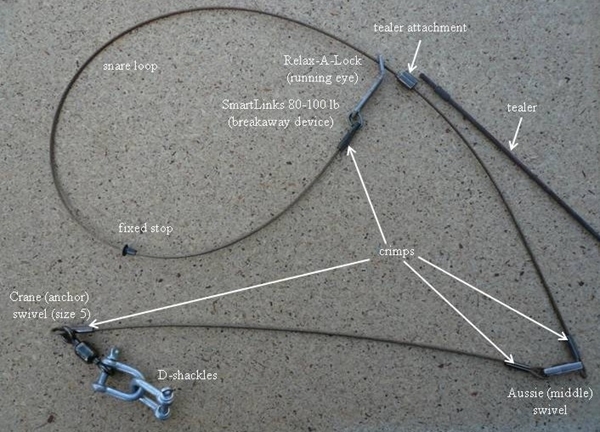During 2005-7, the GWCT designed an experimental fox snare in which selectivity was addressed by incorporating a ‘breakaway’ device and by a pre-determined minimum loop size. These features were intended to allow non-target wildlife species (badgers, deer, and brown hares) to self-release after capture. Performance of the snare was compared against snare types already in use in the UK, through a randomised field trial in 2007-9 involving 34 gamekeepers at separate sites.

The field trial showed substantial improvement in post-capture selectivity, without sacrificing effectiveness to capture the target species (fox). 39% of badgers and 68% of hares that entered experimental snares released themselves.
The field trial also showed that for animals which did not self-release, condition was strongly related to capture circumstances. If the animal in the snare had become entangled with nearby fixed objects (such as woody vegetation, fence materials, protruding anchor stake), the probability of injury or death was 40%, compared with less than 5% where the animal was not entangled. Entanglement can largely be avoided through choice of snare location. Defra’s Code of Practice (CoP) advises use in open settings where entanglement is unlikely. To catch foxes in these circumstances, the snare must be very hard to detect by sight or smell. The GWCT snare was specifically designed for easy and successful use in these circumstances: by choosing components that are small and neat, and can be boiled in water to remove scent; and by providing simple tealer and anchor attachments so that handling is kept to a minimum.
Until 2011, no snares available commercially in the UK met the recommendations of Defra’s CoP. A few snare models have now emerged to fill this gap. Among these, only the GWCT design has a proven field performance. The GWCT design is published and is freely available for manufacturers to follow. Regrettably, we are unable to monitor copies or to control quality, so users should check carefully that the snare they buy corresponds to our published specification.